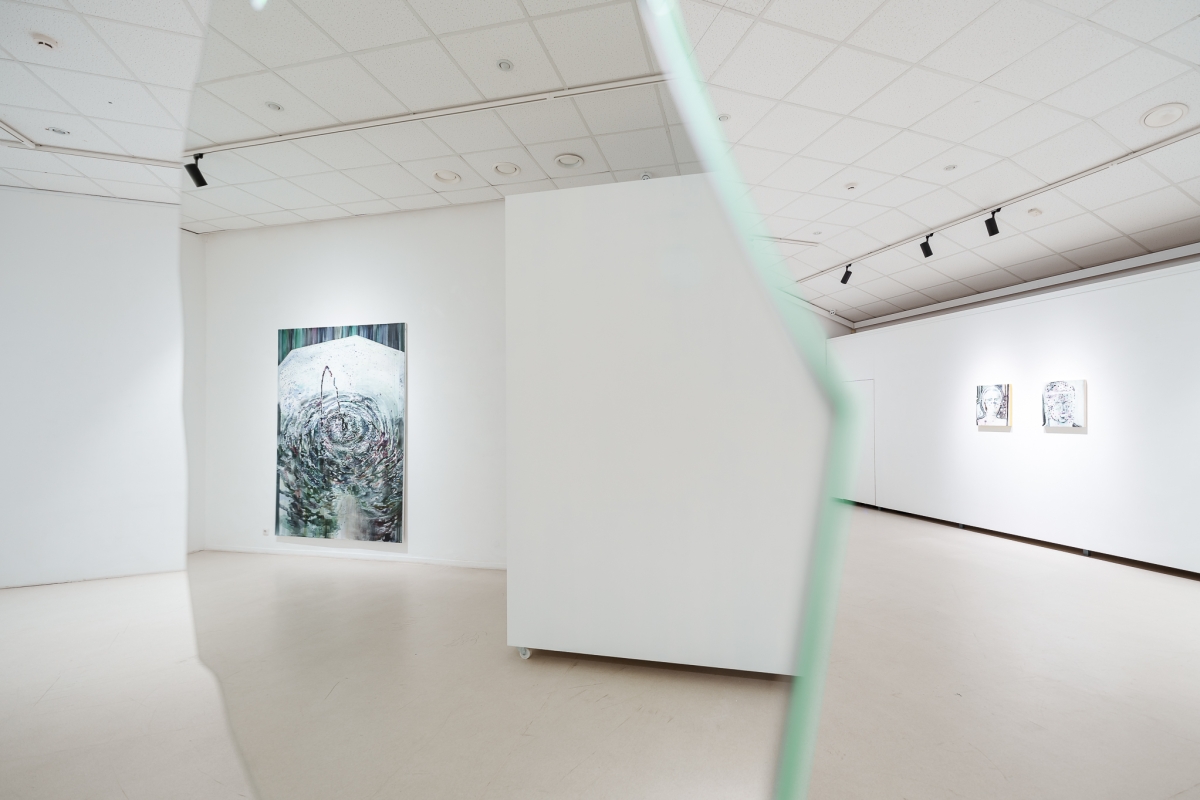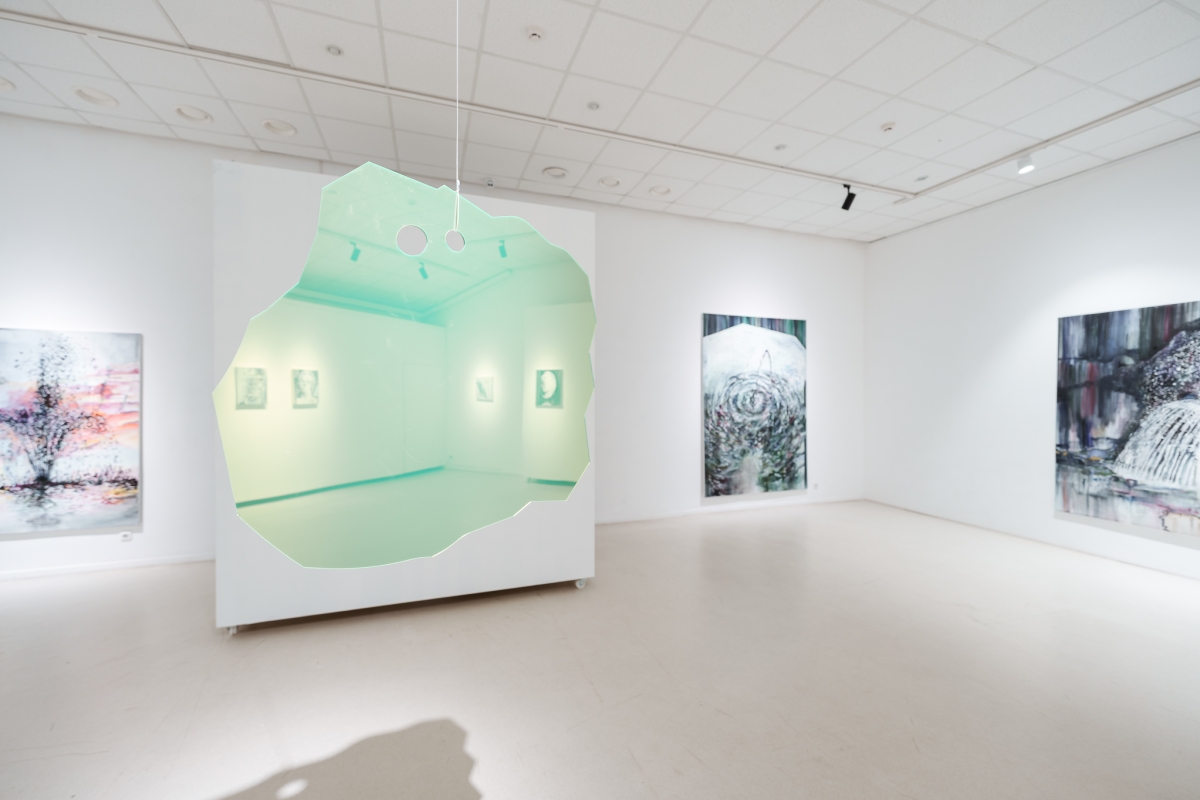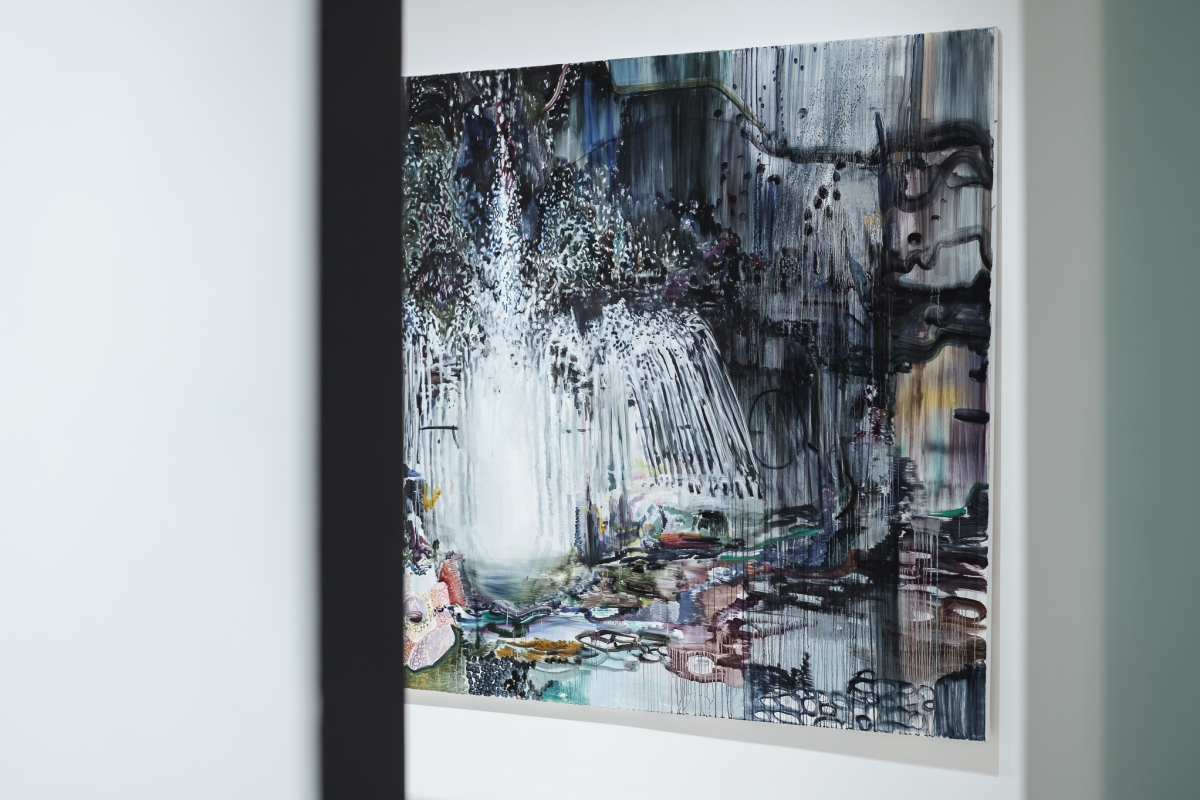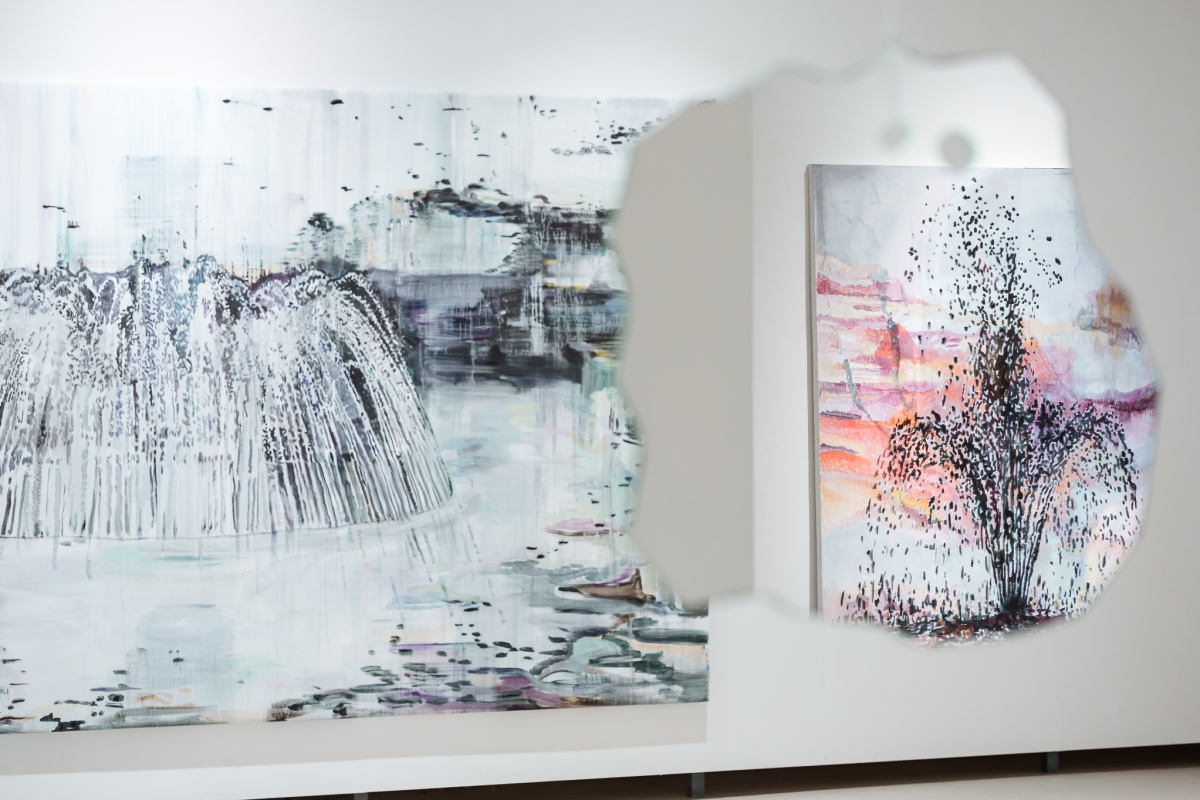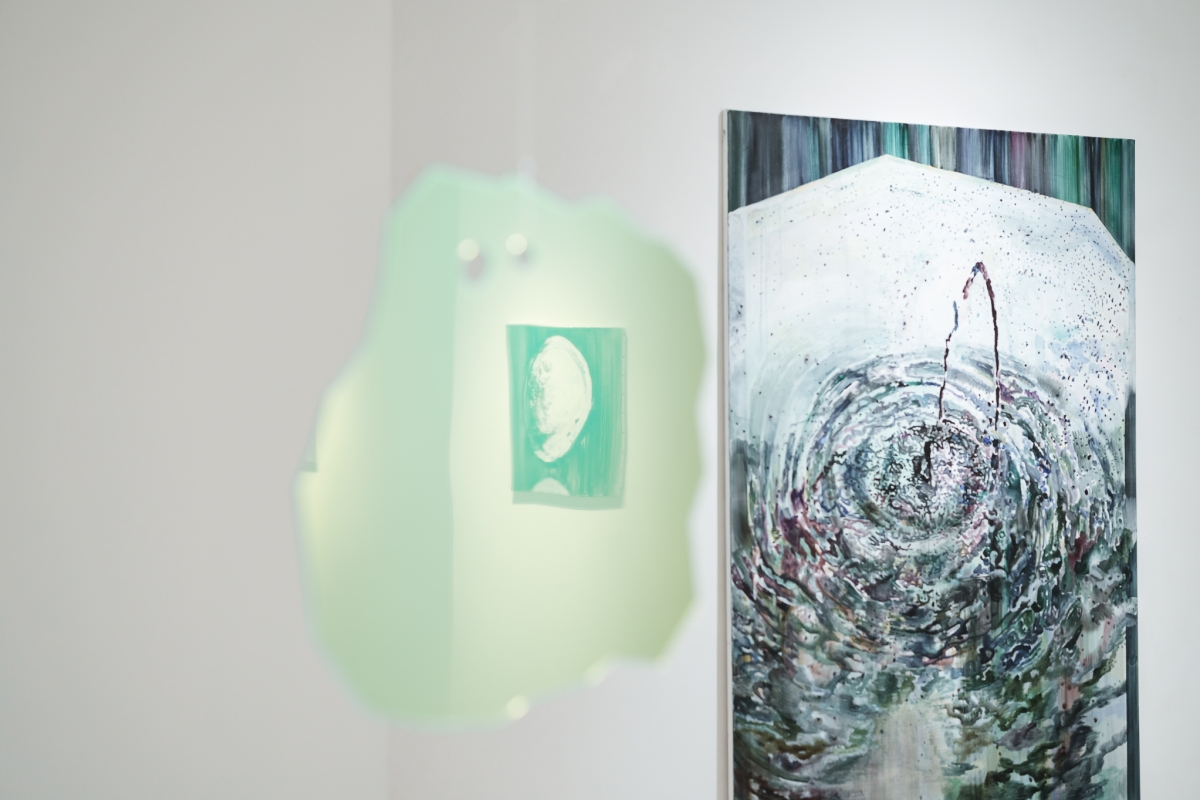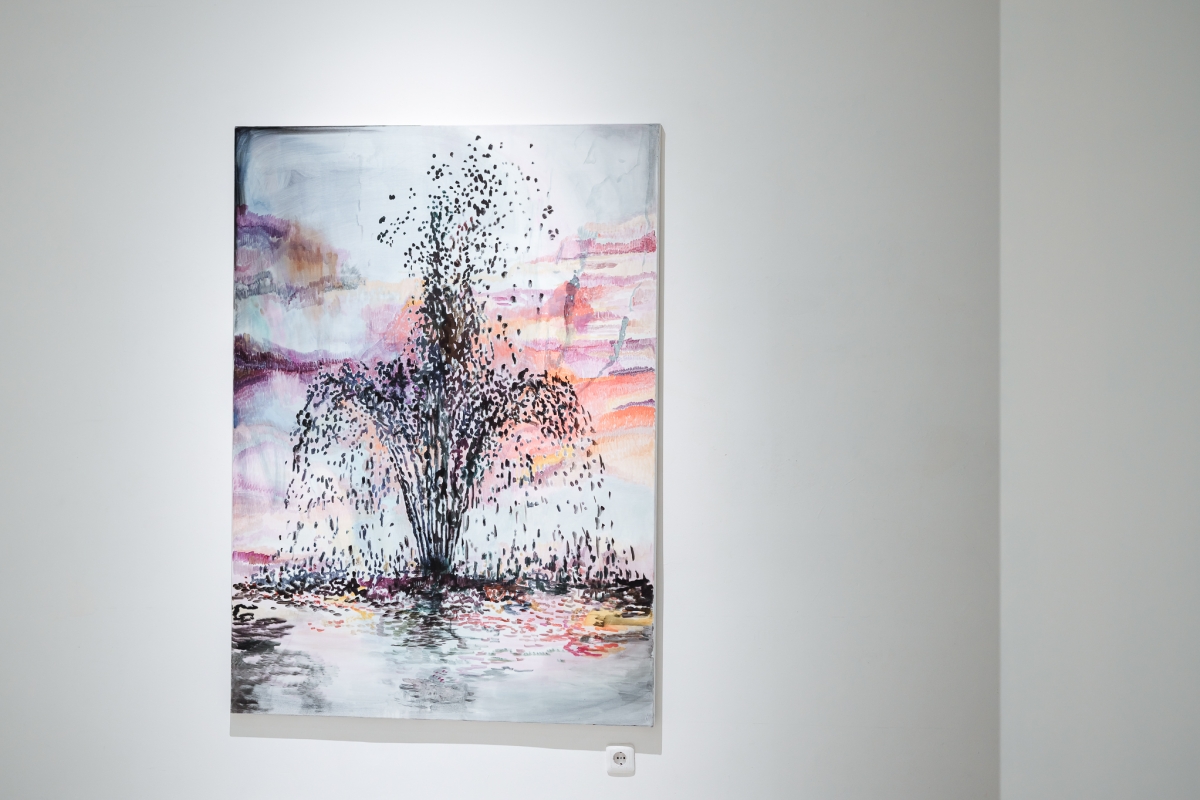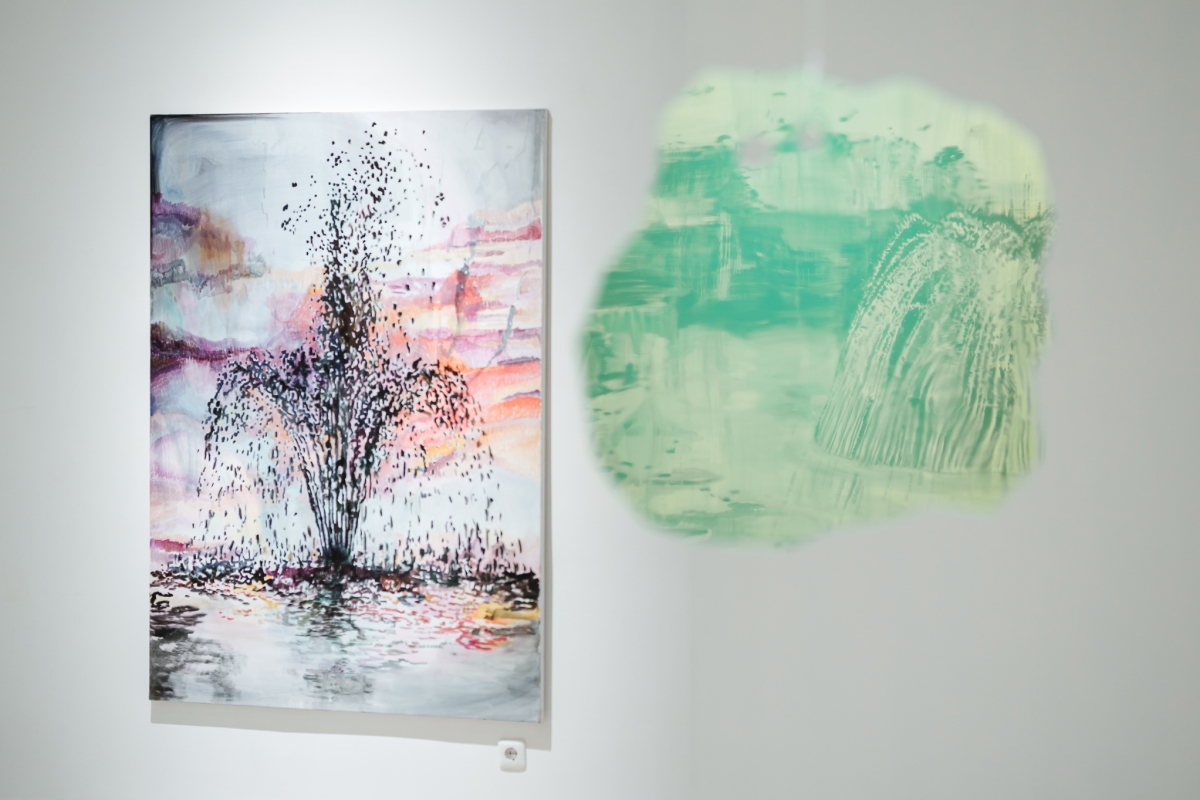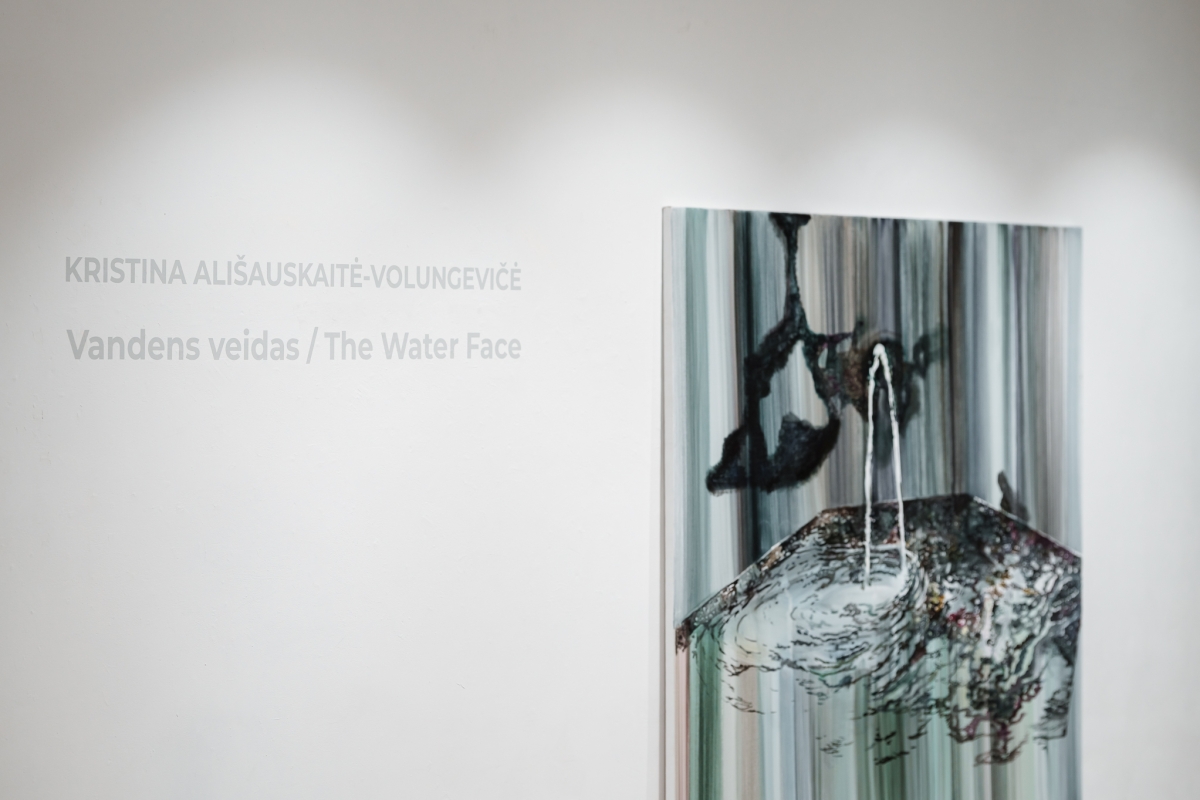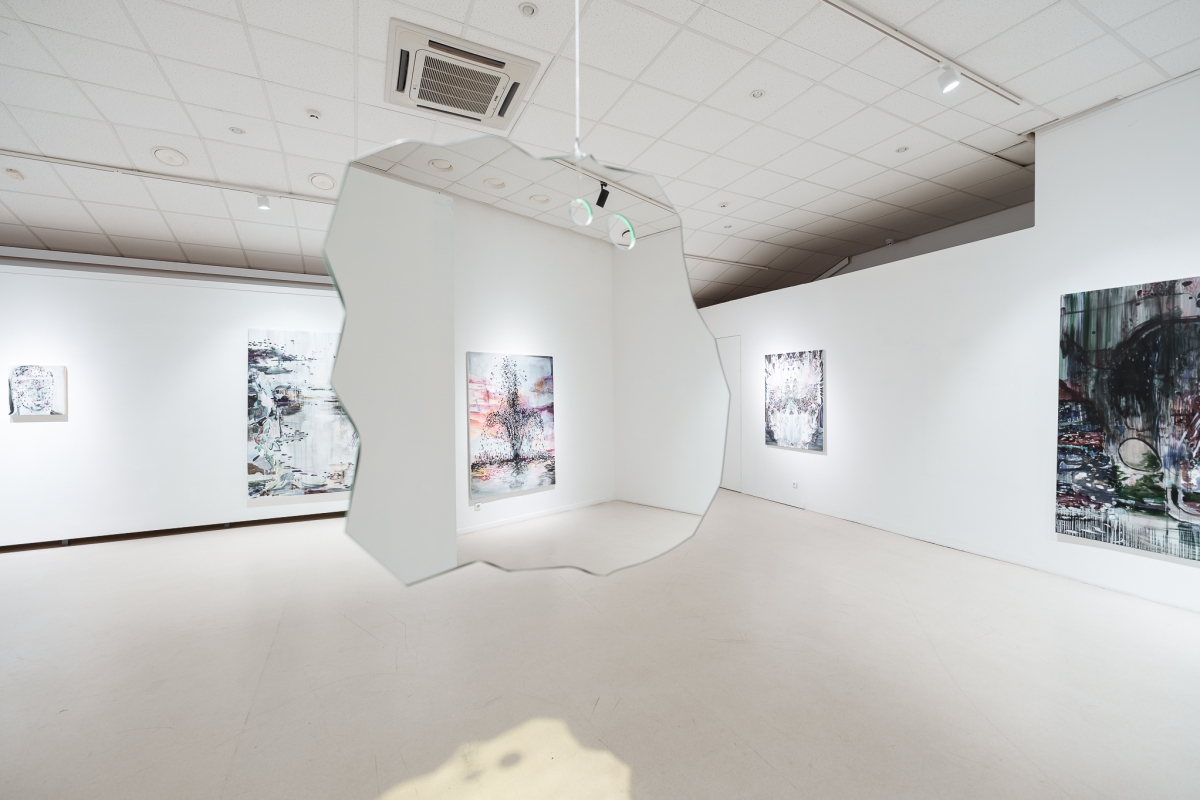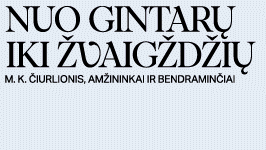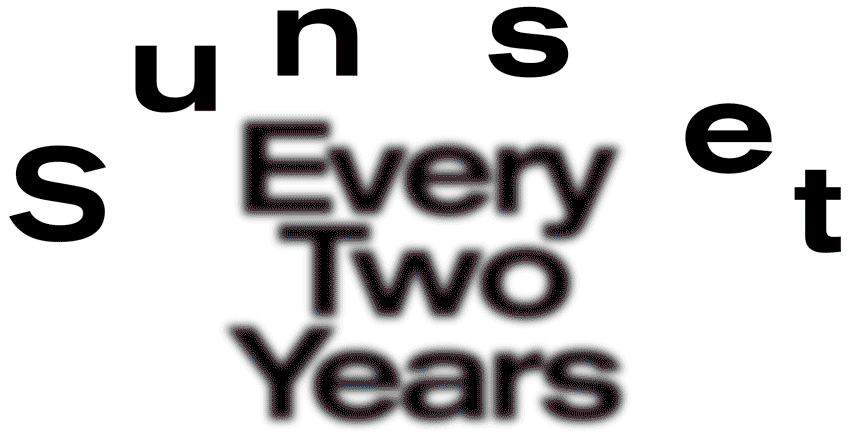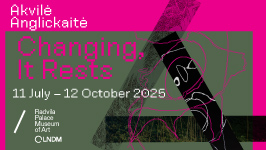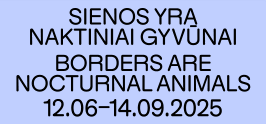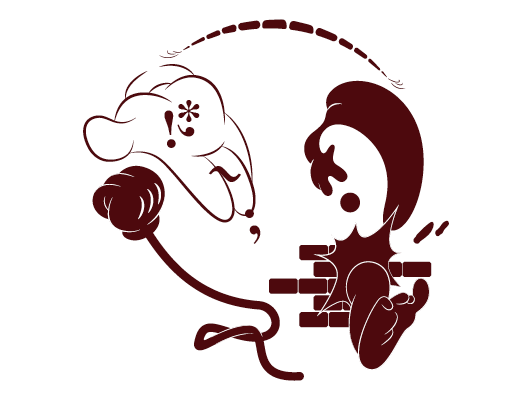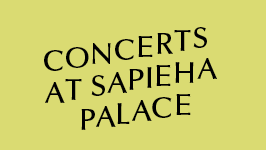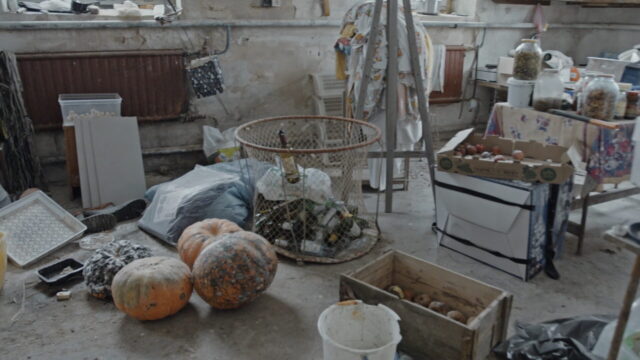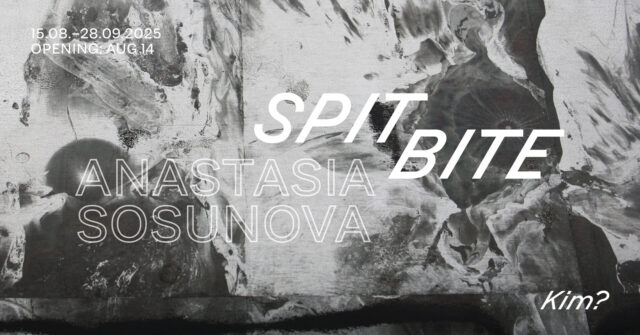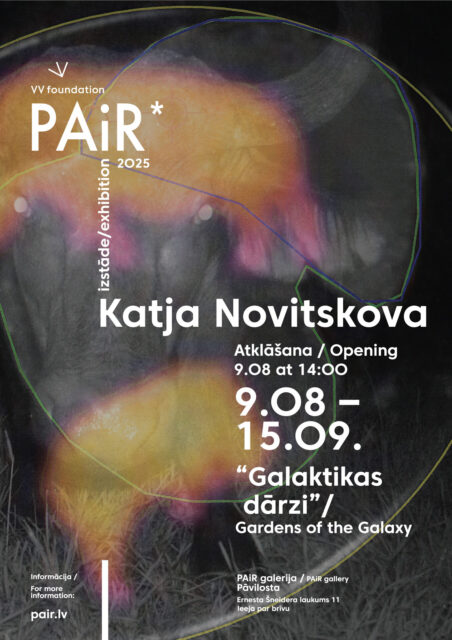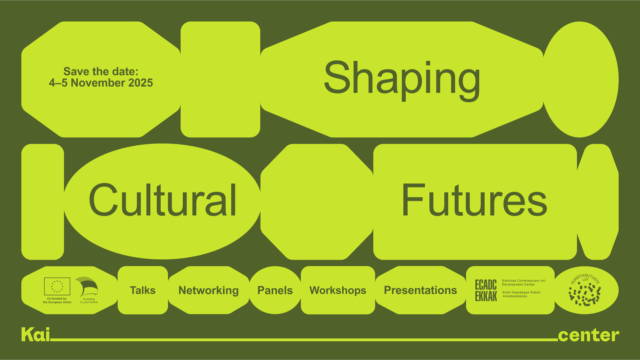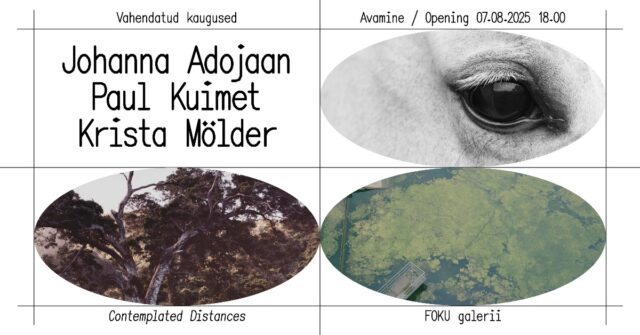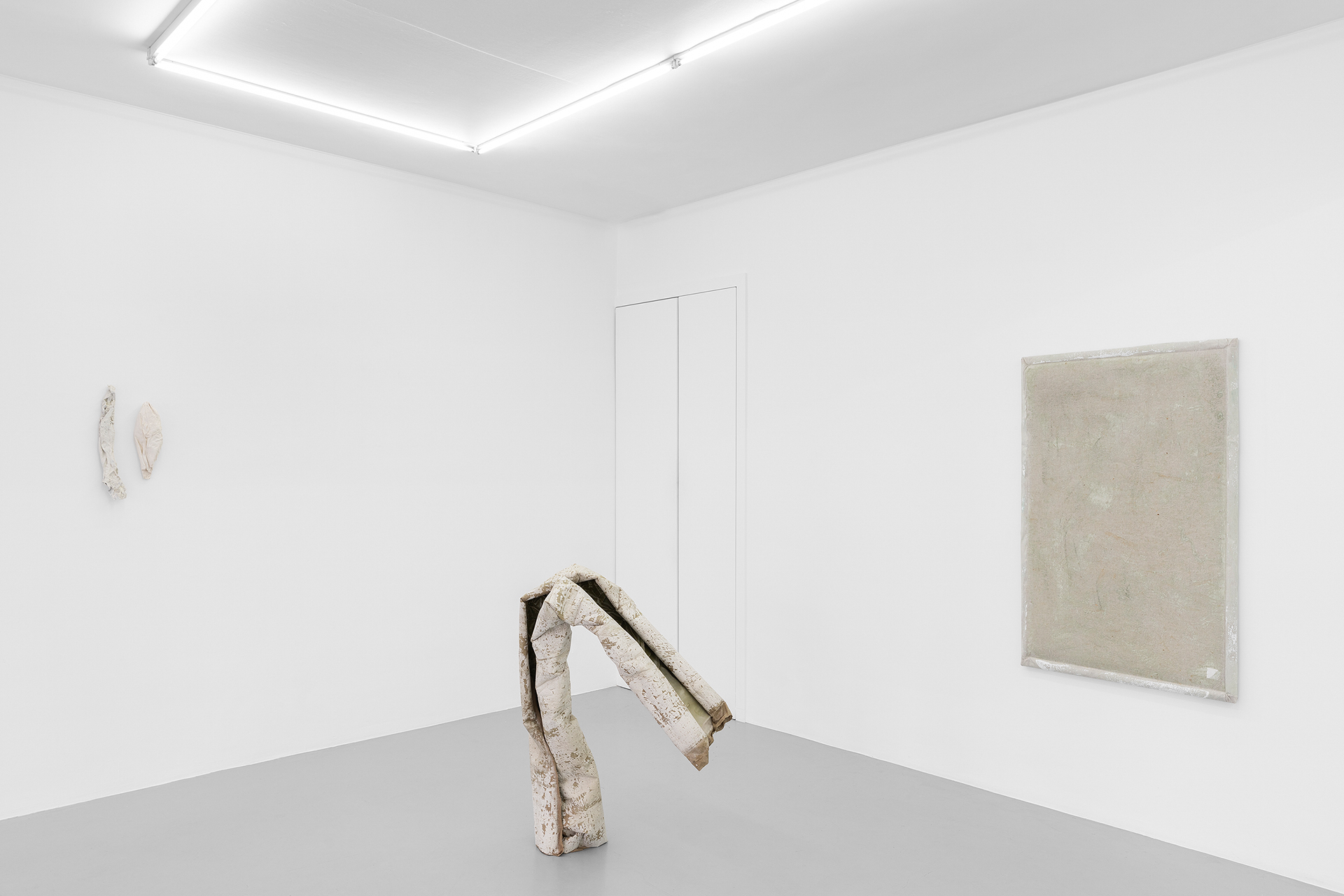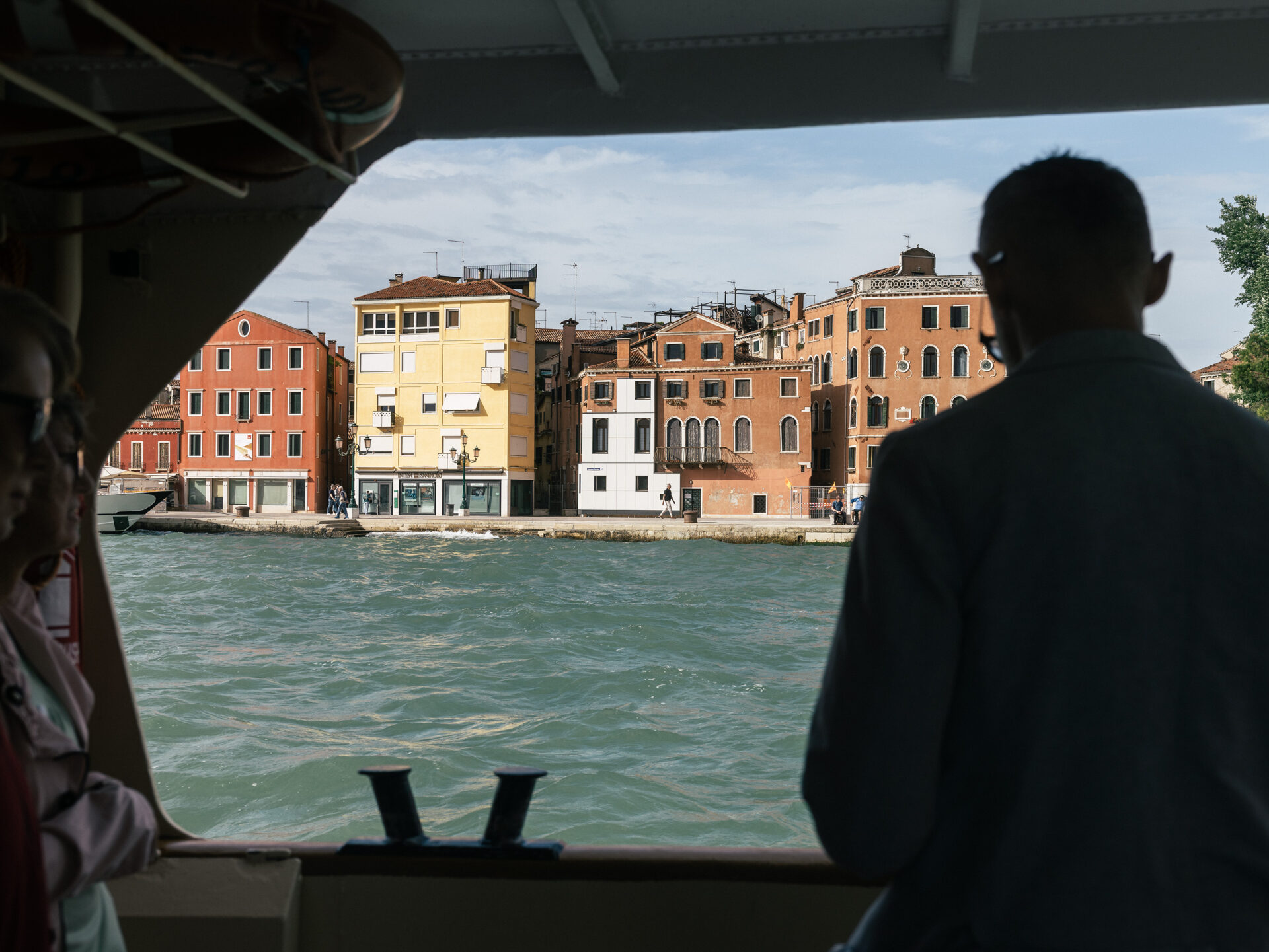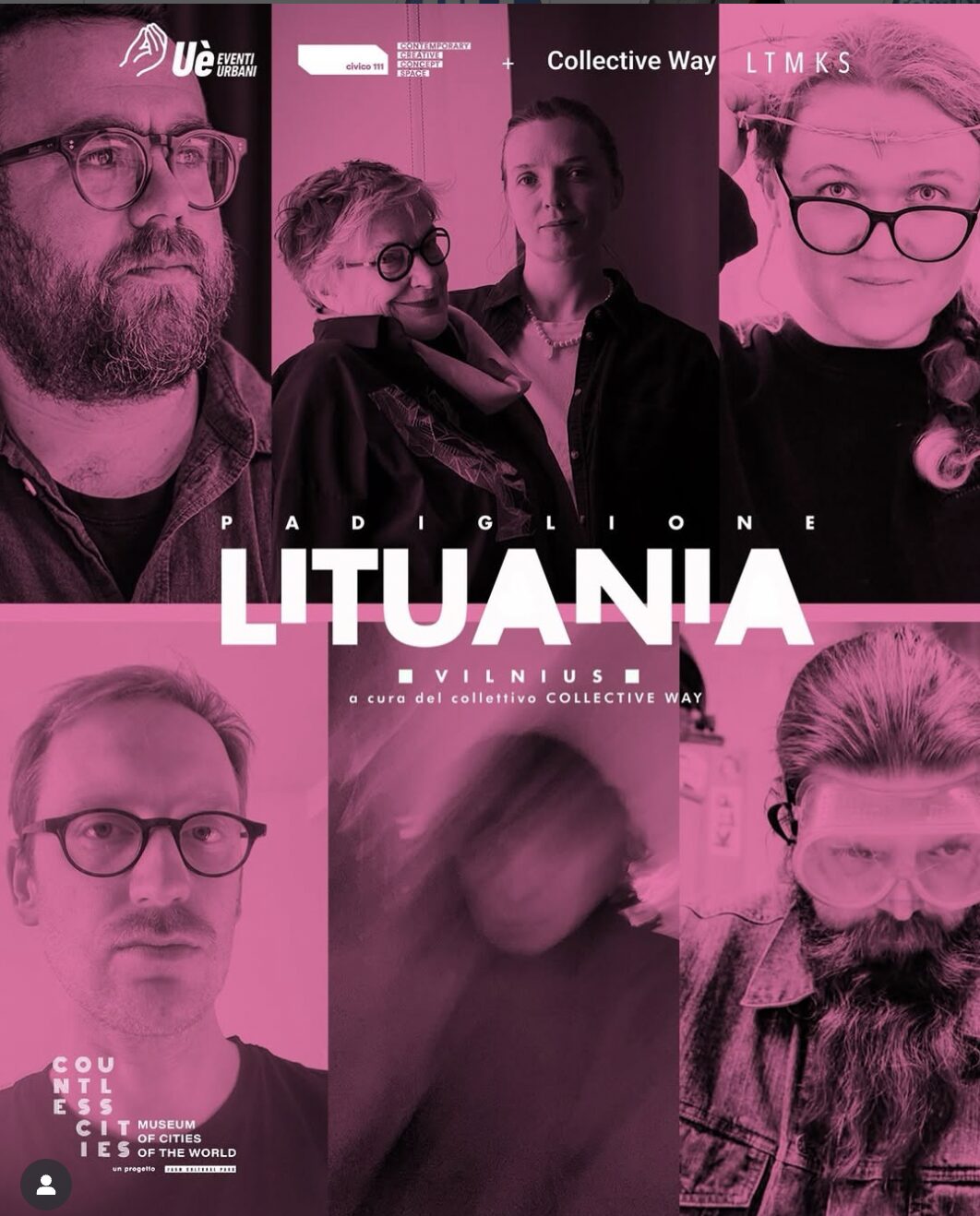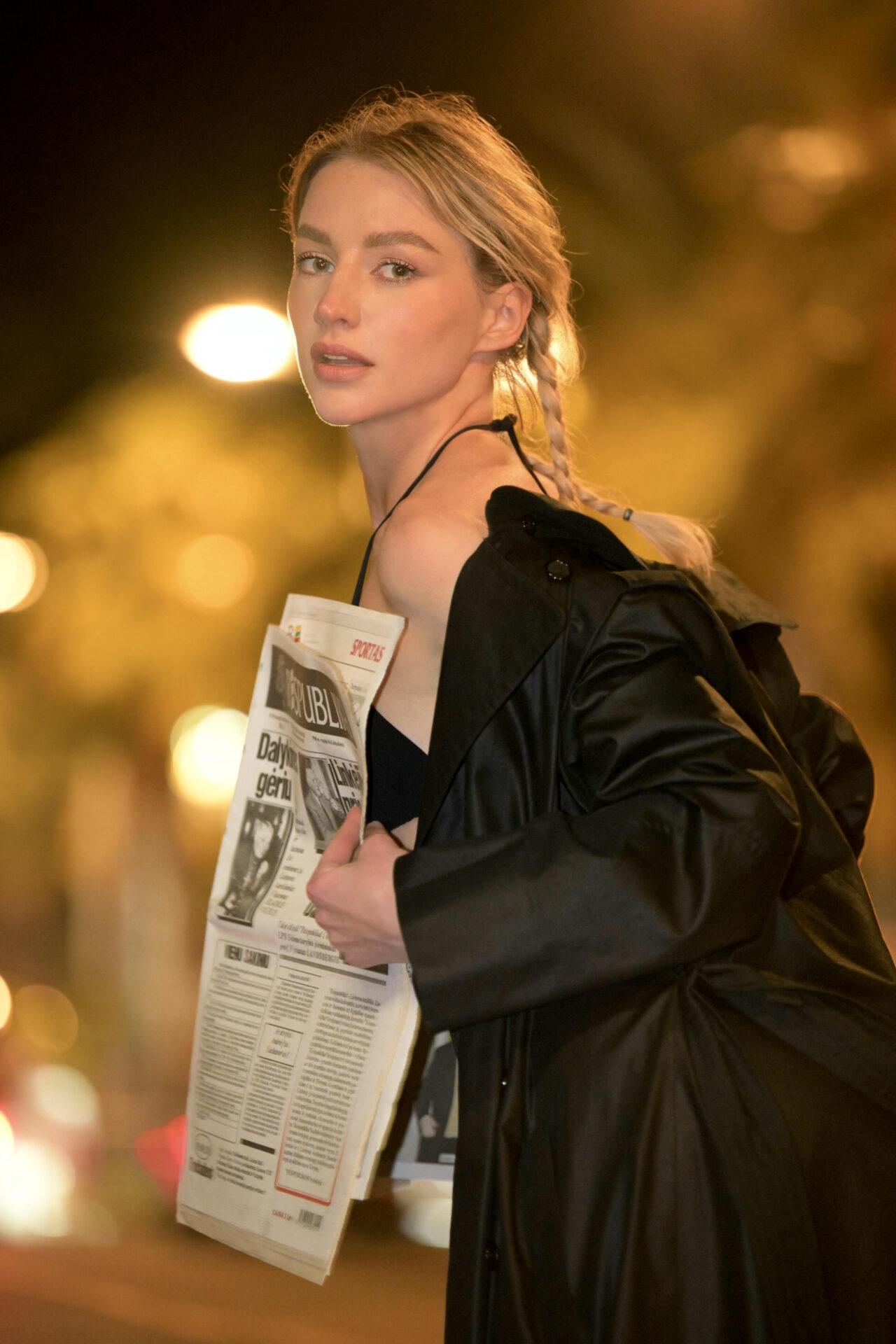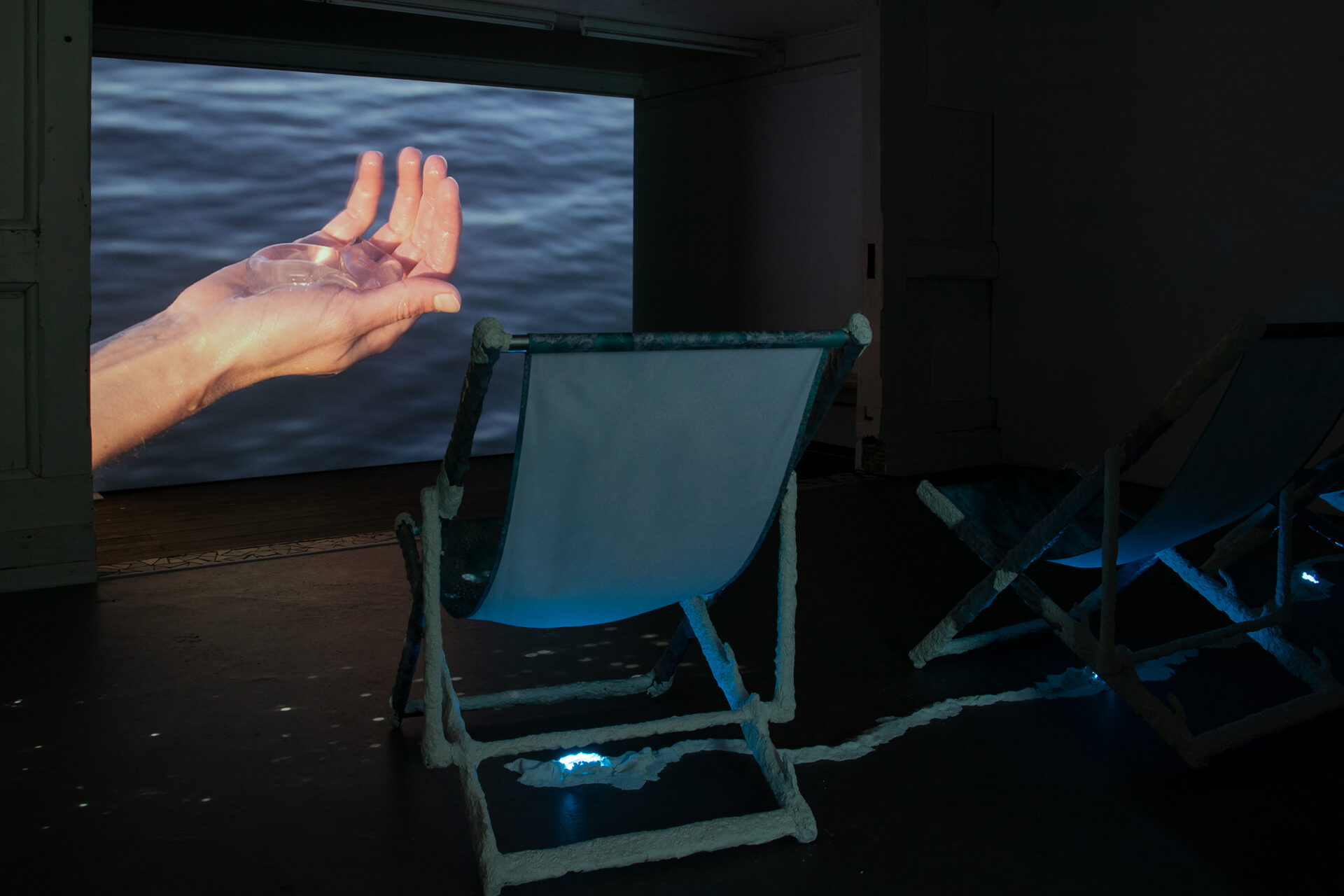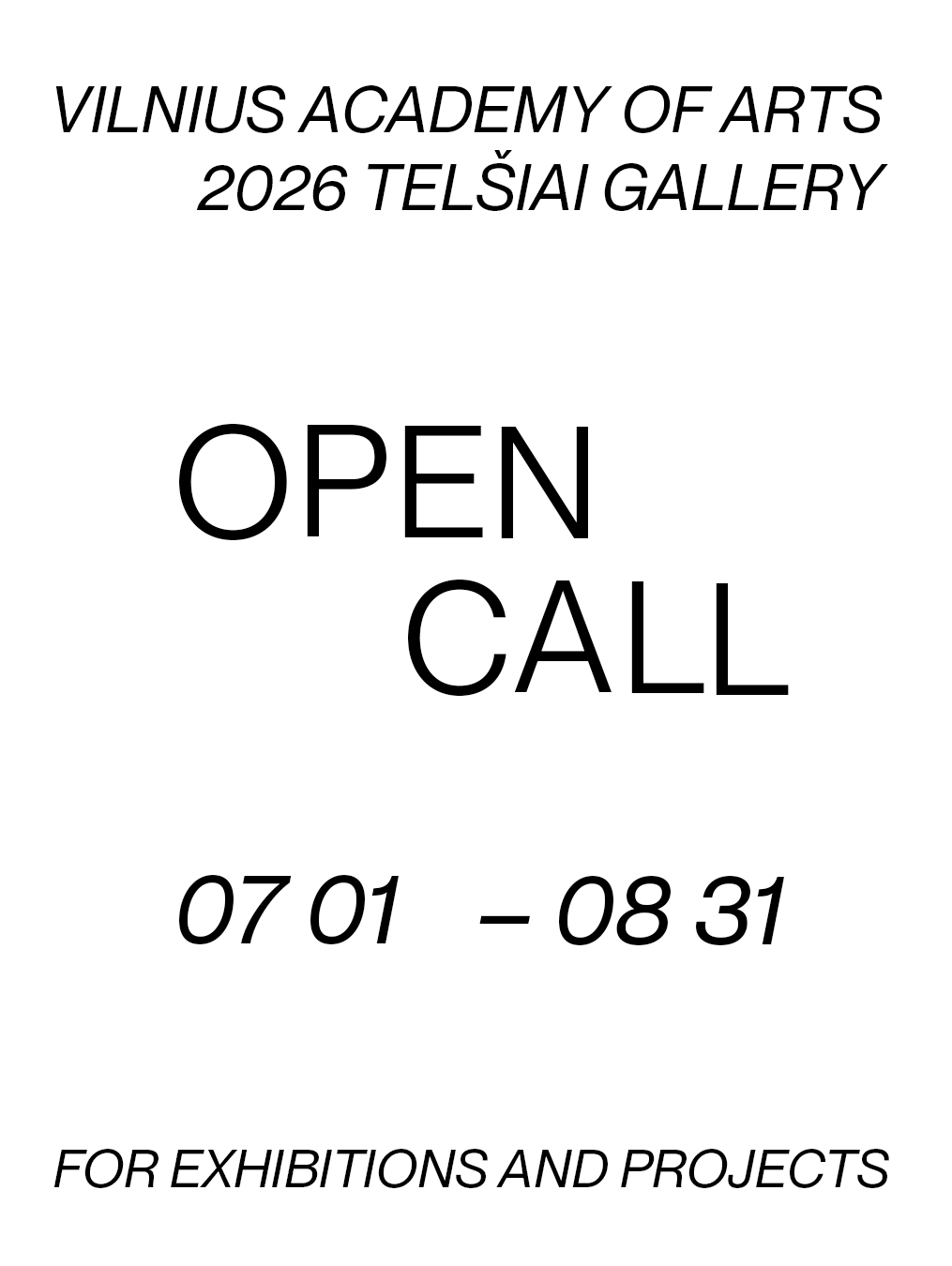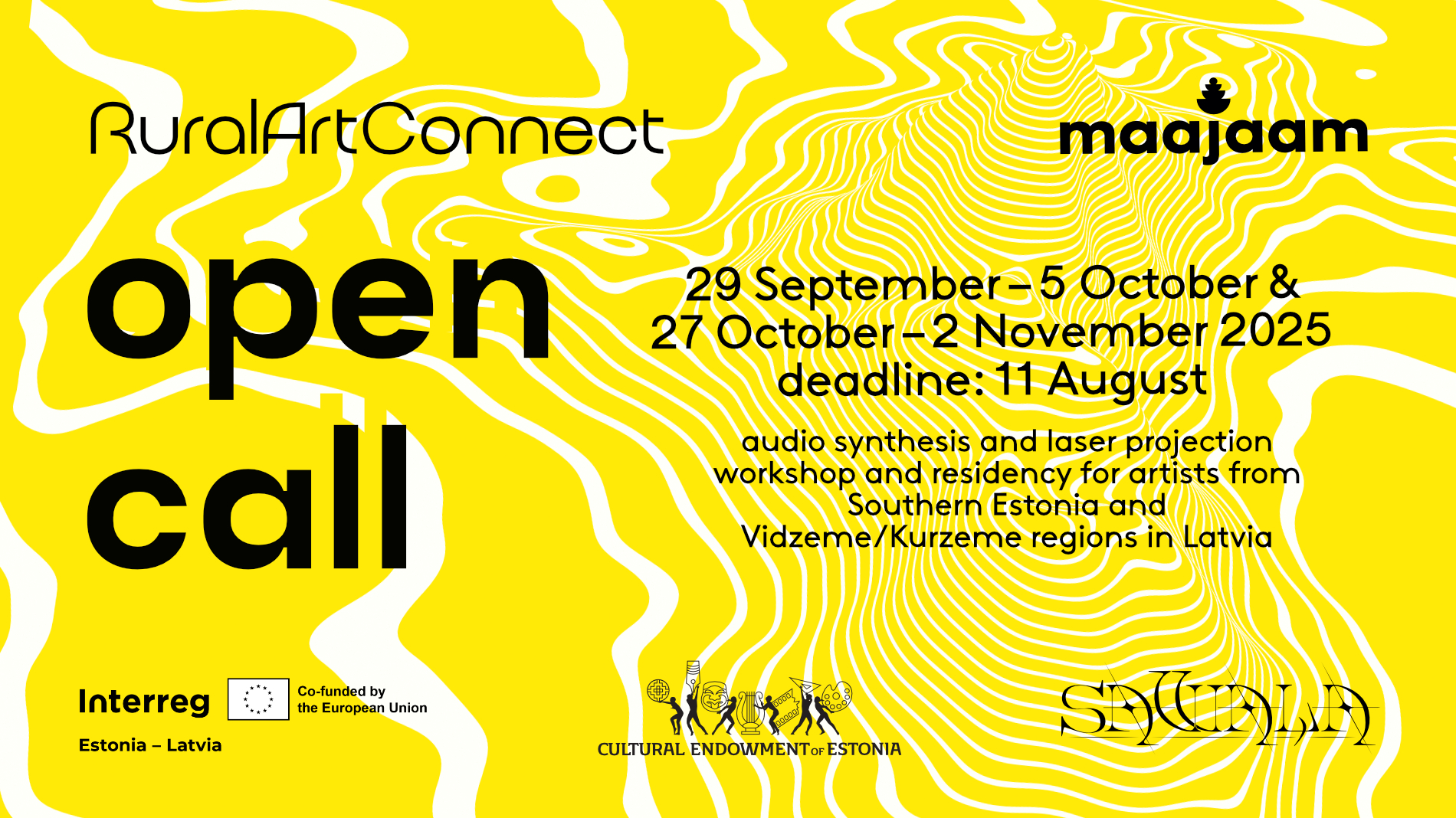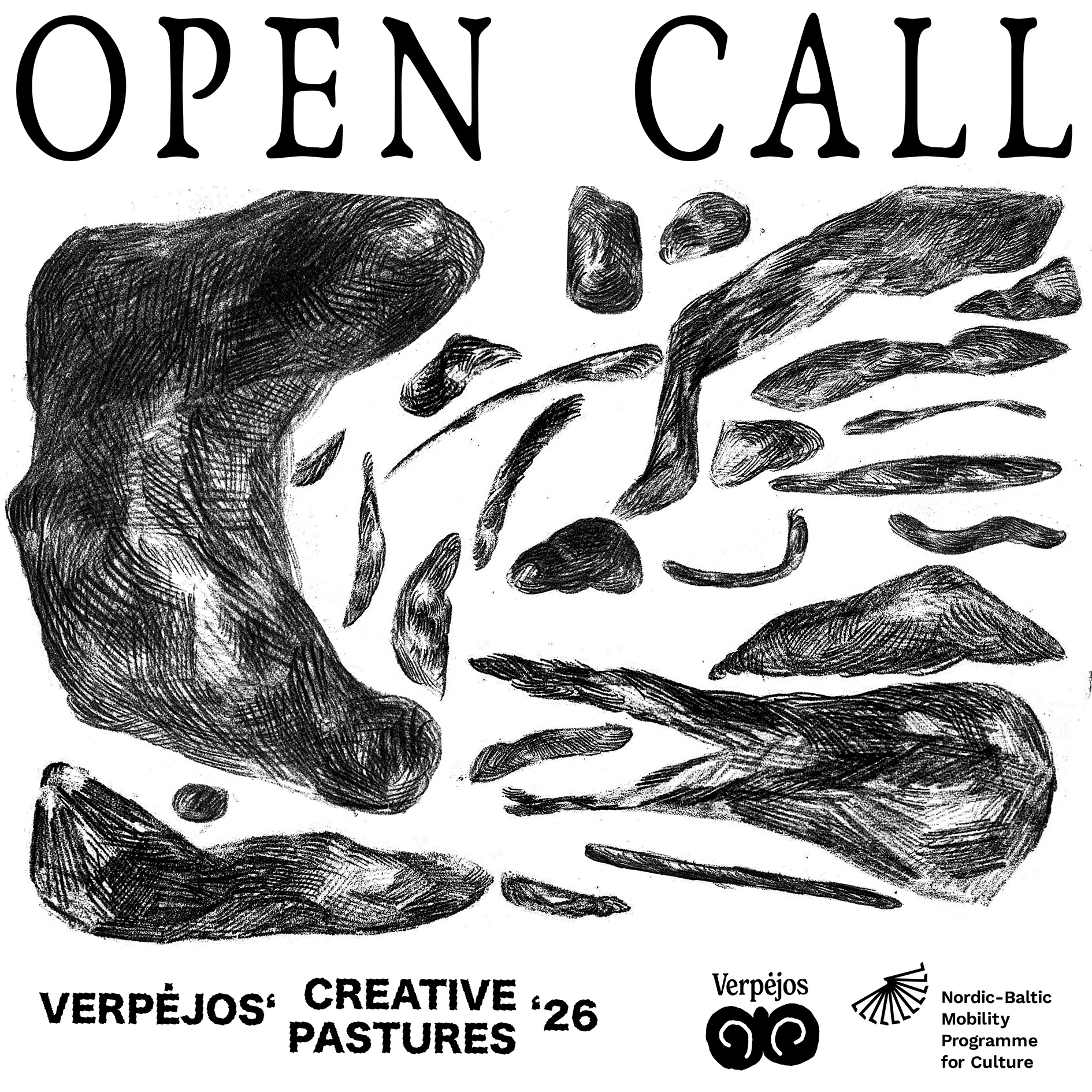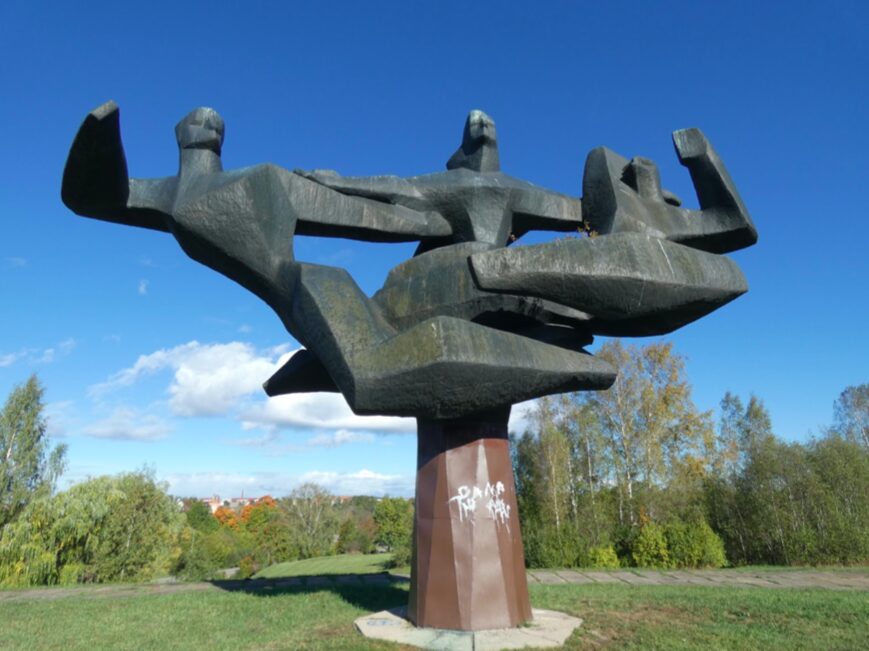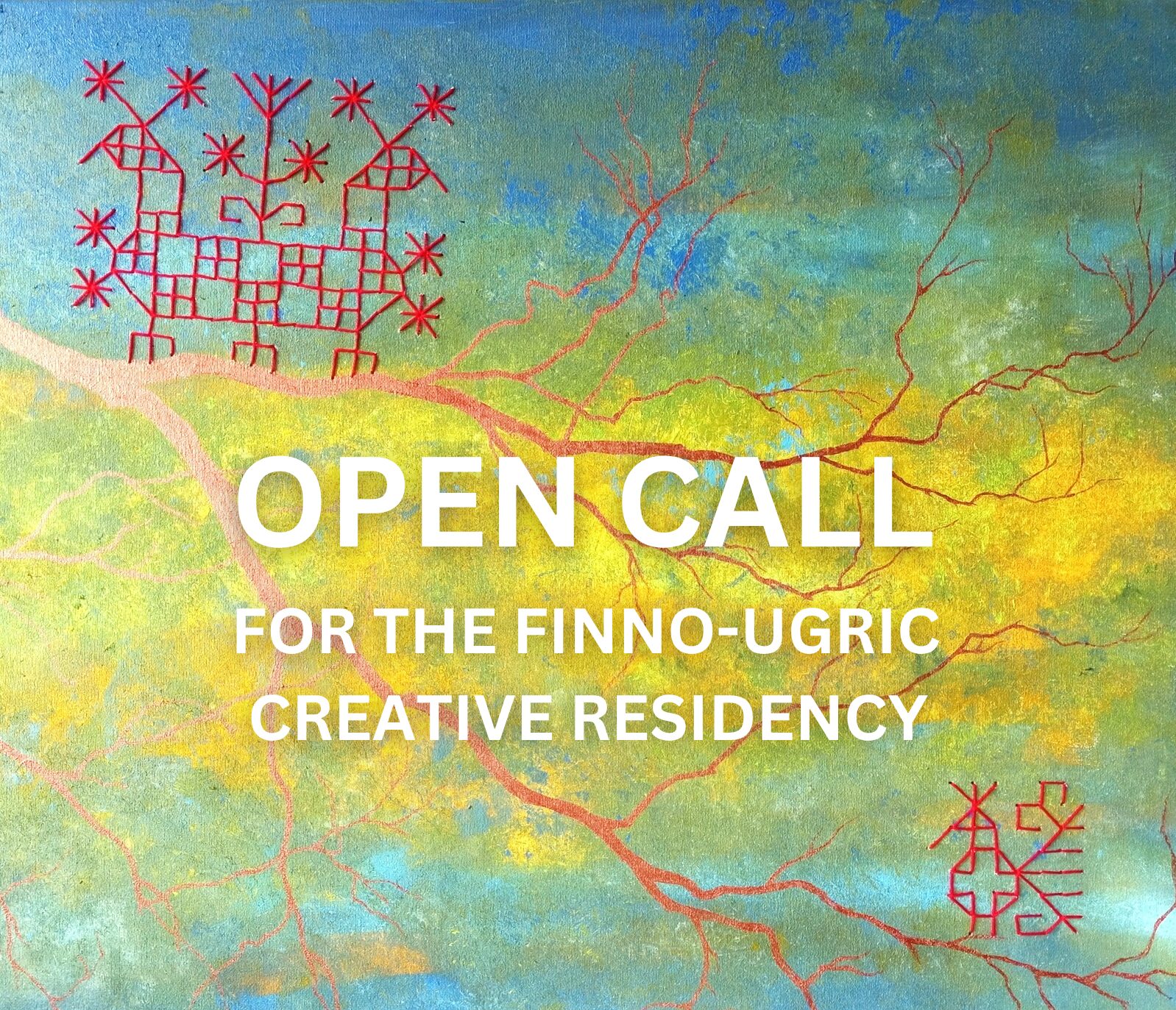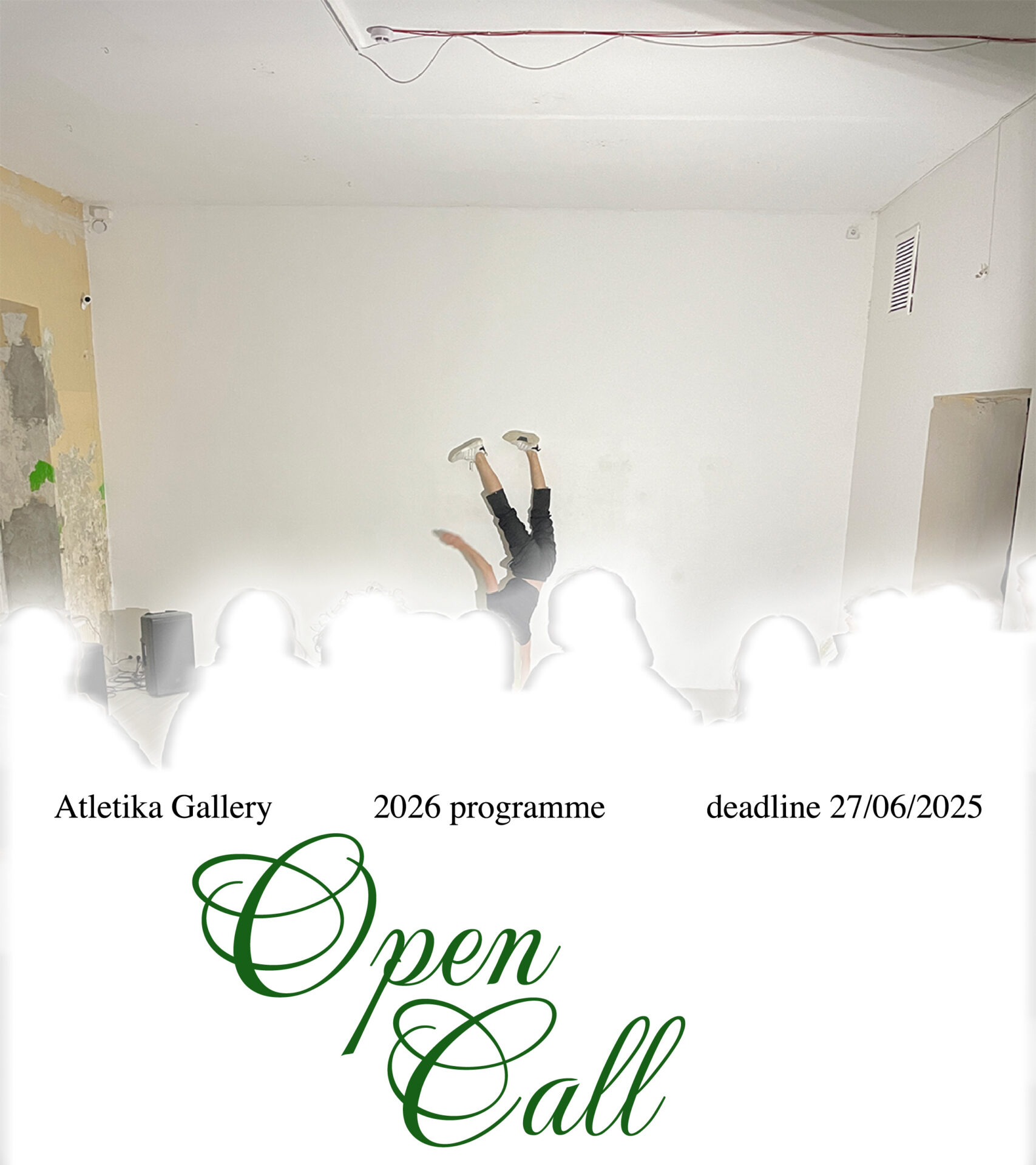The double-sided mirror, centrally suspended in the exhibition space, allows you to see either the faces of your fellow visitors or your own reflection. Which experience is more pleasurable? It offers opportunities for cheeky observations. For a moment, your own face seems to merge with someone else’s body, helping you realise that others share the same experience. When you visit the exhibition alone, the true purpose of the mirror becomes clear: it allows you to view paintings hung opposite each other simultaneously, enabling you to fully experience the artist Kristina Ališauskaitė-Volungevičė’s concept of a fluid reality. Her solo exhibition ‘The Water Face’ is at the KCCC Exhibition Hall until 28 April.
The mirror here also serves as a metaphorical device that bridges the realms of the tangible and the surreal, the seen and the unseen. This dichotomous mirror, with one side reflecting the conventional spectrum of light, and the other bathed in a luminous neon green, invites the viewer into a dual narrative of reality and altered perception. The traditional mirror presents a direct, unaltered view of reality, capturing moments like a fountain’s flow, while the neon green mirror offers a transformative, otherworldly perspective, suggesting an alternate dimension full of vitality and continuous change.

 Just as water flows, adapts to its container and changes states, painting too is a medium of transformation. The brushstrokes, whether they depict the literal flow of a fountain or the abstract essence of movement, embody this change. Paintings, like water, can be gentle or forceful, clear or opaque, encapsulating the dynamic nature of both the subject matter and the medium. Water reflects the world around it, but also distorts, enhancing or diminishing realities based on the viewer’s perspective. Similarly, paintings offer reflections of reality, sometimes direct and at other times abstract, allowing for deeper introspection. The act of painting can refract and reflect cultural, personal and universal truths, much like water reveals and conceals the depths beneath its surface.
Just as water flows, adapts to its container and changes states, painting too is a medium of transformation. The brushstrokes, whether they depict the literal flow of a fountain or the abstract essence of movement, embody this change. Paintings, like water, can be gentle or forceful, clear or opaque, encapsulating the dynamic nature of both the subject matter and the medium. Water reflects the world around it, but also distorts, enhancing or diminishing realities based on the viewer’s perspective. Similarly, paintings offer reflections of reality, sometimes direct and at other times abstract, allowing for deeper introspection. The act of painting can refract and reflect cultural, personal and universal truths, much like water reveals and conceals the depths beneath its surface.
No wonder that the mythologies of many ancient cultures viewed water as a gateway to another world. Throughout history, rivers, lakes and oceans have been revered as sacred conduits to realms beyond our own, often depicted as portals where the veil between the earthly and the divine is thinnest. This mystical attribute of water has inspired countless legends and rituals, suggesting a deep-seated belief in its power to connect us to the mysterious and the supernatural, though not always in the manner one might hope (cue the ominous nod to the occasional, unfortunate act of drowning, ahem).
In the painting Oil Is Water, water is transformed into a strikingly different substance. A geyser, presumably of petroleum, bursts forth like a fountain, challenging our traditional perceptions of natural flows and the elements. This visual metaphor powerfully juxtaposes the life-giving nature of water with the environmentally hazardous qualities of oil, provoking a reflection on the impact of human activity on the natural world. Similarly distressing, PFAS chemicals, known as ‘forever chemicals’, persist for thousands of years and have been accumulating in the environment, contaminating soil and water. Recent studies, including those from Stockholm University, reveal that PFAS levels in rainwater exceed safe limits, with these chemicals now pervasive in global water sources, and even found in human blood. The poisons within us will outlive us.
In the paintings by Kristina Ališauskaitė-Volungevičė, faces appear as though they are negatives, reflections in water, with features obscured and pixelated as if distorted by digital noise. These portraits, resembling frozen holograms, evoke a sense of being suspended within themselves, capturing a contemporary feeling of alienation and introspection. Perhaps this is a metaphor for our own existence, where, like these images, we too are only partially visible, with much of our essence hidden beneath the surface, visible only in fragments.
The essence of the exhibition ‘The Water Face’ eludes being easily grasped; it slips through your fingers like a slippery water creature, leaving you thirsty for more, eager to dive deeper into its enigmatic depths. You take away from it what you’ve caught like a fisherman without a net, a glimpse of something elusive and captivating.
Photography: Gediminas Sass

